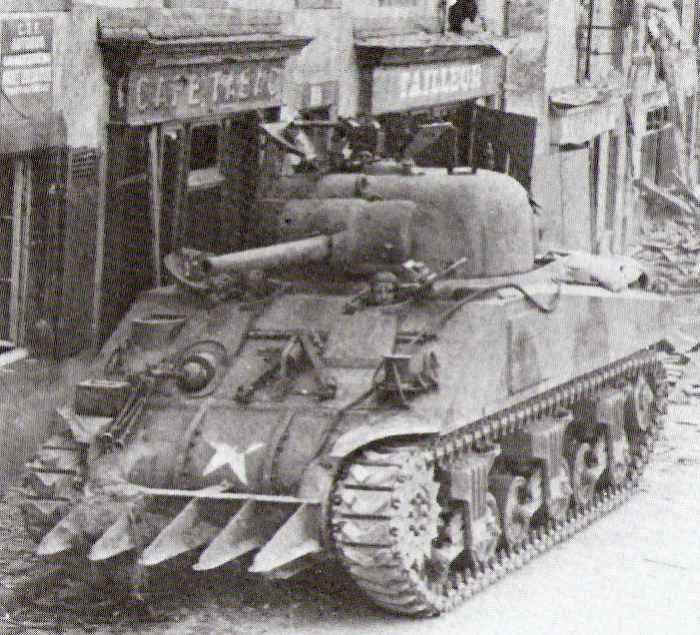They lead like Dwight Eisenhower, Omar Bradley and George Marshall led the invasion of Nazi Europe. They trust their team. They give freedom to innovate. They expect others to speak candidly. They listen.

The Generals listened before deciding
Soon after Allied forces stormed the beaches of Normandy in June of 1944, the American advance stalled in France’s infamous hedgerows. Hedgerows were several feet of packed soil topped by tall brush and vines. Tanks cresting the hedgerows exposed their vulnerable underbelly to devastating anti-tank weapons.
The Allied invasion soon fell behind schedule due to tenacious Nazi defense of the hedgerows. Michael Stallard continues the story (source):
One day in a discussion between officers and enlisted men, the idea arose of mounting saw teeth on the front of the Sherman tank. Many of those present laughed at the suggestion. One soldier, however, took the idea seriously. Sergeant Curtis G. Culin, a cab driver from Chicago, immediately designed and built a hedgerow cutting device made from pieces of steel rail that the Nazis had strewn across the beaches to slow down an amphibious attack. When tested, the new device easily sliced through the hedgerows…..
Within days of testing the Rhinos, the idea was presented to General Omar Bradley, head of the First Army. In short order, he attended a demonstration of the Rhino tank and immediately ordered 500 of Culin’s devices. Within two weeks, sixty percent of the First Army’s Sherman tanks were modified into Rhinos. With the Rhinos the First Army were able to proceed through the hedgerow country in time to crush the Nazi army.
Curtis Culin’s innovation might not have occurred had it not been for a chain of command consisting of Generals Omar Bradley, Dwight D. Eisenhower and George C. Marshall, each of whom gave the soldiers under his command the freedom to share and test ideas.
This is how turnaround pastors lead.
Note: What follows is an excerpt from our upcoming book about the distinguishing characteristics and best practices of effective turnaround pastors.
Turnaround Pastors are Collaborative Decision-makers
We were surprised.
Our research into the distinctive characteristics of effective turnaround pastors revealed something wholly unexpected.
Contrary to popular expects, turnaround pastors aren’t “ready, fire aim” people. They don’t make snap decisions. In fact, one of the most significant characteristics that set turnaround pastors apart from their colleagues is how they make decisions! Using The Birkman Method, a normative instrument, we discover that turnaround pastors scored high in “Thought Need.”
Here’s a taste of what you’ll learn in our upcoming book.
| Take time to consider options | Take immediate action |
| Comfortable with ambiguity | Need everything “black and white” |
| Listen to suggestions | Limit discussion of the issues |
| Discuss their concerns with others | Reduce issues to simplest form |
Turnaround pastors may take just a teensy bit longer to make a decision than their colleagues. They’re more likely to seek a bit of wisdom, a word of advice from a trusted advisor or a mentor. They do give more thought to the ramifications of the decision before them.
Some applications
- Commit this mantra to memory: “Jesus doesn’t let me have all the good ideas.”
- When you’ve made a decision, take 10 or 15 minutes to think through the ramifications before committing to a course of action.
- Pick up the phone. If it’s an important decision, talk to others. Reach out to pastors who are in similar circumstances. Talk to a church leader.
- Learn to listen.
Want to learn more about making good decisions?
If this teaser from our upcoming book has whetted your appetite, and you’d like to be notified when it is released to the public, join our email list for up to the minute information. And while you’re at it, your support of our work would be greatly appreciated. We’re operating on a few threads from a frayed shoestring! Even a few bucks would help!



